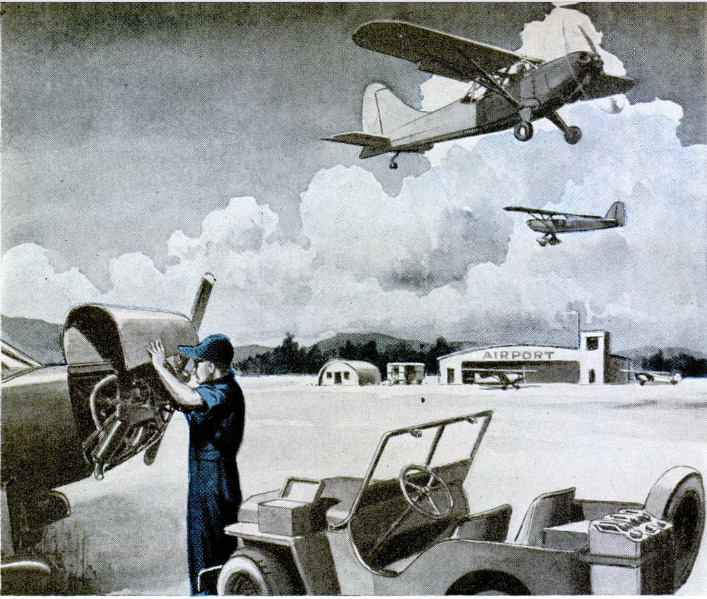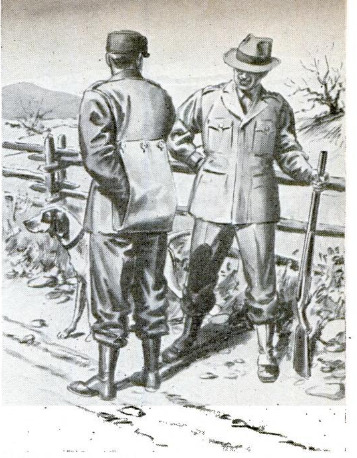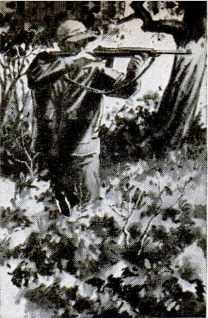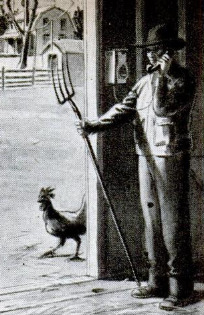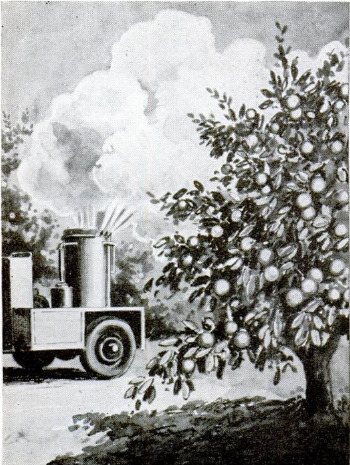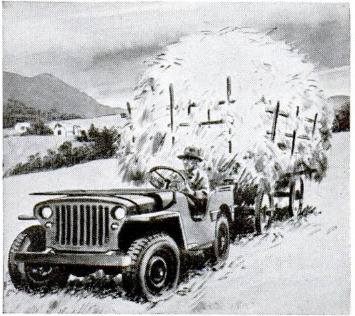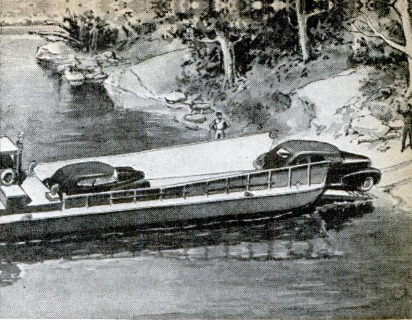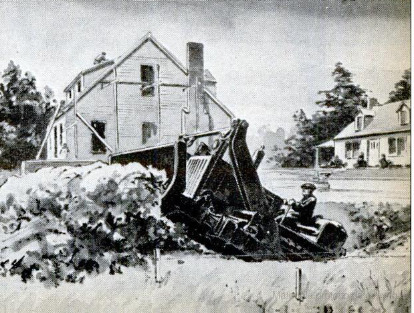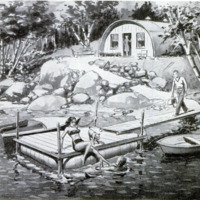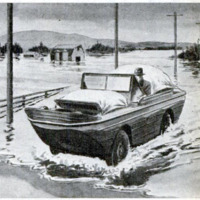-
Titolo
-
How You Can Use Surplus War Material?
-
Article Title and/or Image Caption
-
How You Can Use Surplus War Material? We asked readers to tell us what they planned to do with leftover Army goods. Here's the answer.
-
extracted text
-
THE Biblical injunction to beat swords into plowshares and spears into pruning hooks was fairly easy to follow when wars were fought with swords and spears. But what are you going to do with a General Sherman tank now that it is no longer needed on the battlefield? Of what use is a bazooka to a peaceful civilian? Those responsible for disposing of several billion dollars’ worth of surplus war material would be glad to hear the answers.
They aren't worrying too much about tanks and bazookas, which are relatively unimportant entries on the long surplus-property lists. Take a few lots at random: 39,000 china sugar bowls, 24,000 door pulls, 24,000 jungle kits, 42,800 miscellaneous hand tools, 11,500 kerosene-lantern globes, 2,000,000 laboratory spoons, 500,000 miscellaneous truck and auto parts, 70,000 horseshoes. Go down the line and you see how total the war really was.
Many of the items can be sold virtually out of hand. Most of the clothing, for instance, is almost perfectly adapted for any outdoorsman. Take the Army's battle jacket. Full-cut for freedom, made of multiple-weave poplin, it is warm, roomy, and comfortable. Any jacket that can stand up to jungle weather and barbed wire can laugh at briers and duck weather. The price of surplus jackets sold through retail stores can only be guessed at, but in the Army post exchanges they sell for $16.00.
Practically all excess Army clothing—boots, trousers, socks, shirts, mitts, parkas—will fit into the needs of farmers and outdoorsmen. So will much of the smaller equipment. Collapsible rubber rafts and boats, particularly in the smaller sizes, will be ideal for fishermen and vacationists, who are already clamoring for a chance to buy them. Jungle and survival kits are on the “must” lists of hunters and Boy Scouts.
Not many firearms are yet on the market, though they are in high demand—with the carbine topping the list just now. For those who wish to restock that or any other rifle, walnut gunstock blanks can already be bought in some places. They are priced around $1 apiece, cheaper in quantity lots. Not all those now available, however, are first quality, and anyone wanting to buy had better choose with care. A good many of these surplus blanks are being turned on down into dummy guns for use by school drill corps and similar organizations.
Among the bigger items, Quonset huts have a strong appeal. Some want them for vacation cabins, while others would use them for chicken houses, small cow barns, tool houses, workshops, and garages. Trailers are in demand—every type from light ones to be used as itinerant homes to the heavy giants now fitted out as mobile repair shops. And jeeps, of course, are still at the very top of the list, both among men still in the service and among civilians.
Jeeps, in fact, were listed in one out of every three entries in the contest for the best letters on “How I'll Use Surplus War Goods,” announced in the March 1945 issue of POPULAR SCIENCE. Next in demand among the hundreds of entrants were rubber rafts, listed by 11 percent. Then came airplanes, particularly lightplanes; radios, including walkie-talkies; assault boats, power tools, hand tools, tents, firearms, trailers, electrical equipment. Other items on the list included flame throwers to be used as weed burners, smoke generators for orchard smudge pots, hand grenades to clear brushy ground, and a B-20 fuselage to be made into a roadside diner.
First prize-winner Pvt. Arthur P. Ives, of Fort Benning, Ga., plans to set up a small airport and equip it with jeeps, trailers, telephones, radios, and small planes, all from war surplus. Second prize-winner C. A. Wold, of Togo, Minn., hopes to convert his farm into a rest camp for returning veterans and wants sports equipment, jeeps, rubber boats, tents, insecticides, maybe a small airplane. Electrician's Mate C. M. Newman, of Camp Shoemaker, Calif., third prize-winner, expects to buy one of the Navy's 50-foot liberty launches and convert it into a coastwise cargo vessel to serve British Columbia and southern Alaska fishing villages.
Lasalle L. Nolin, of Woonsocket, R. I., would equip an amphibious jeep as a lifeboat and first-aid vehicle for use on rivers and lakes; Howard L. Smith, of Brockton, Mont., wants an amphibious jeep to haul grain from his ranch to market when the restless Missouri puts the ferries out of commission.
Shortage of household equipment is reflected in the number of people who want to buy electric power plants, heating equipment, laundry units, sewing machines, plumbing, and even secondhand lumber. Refrigeration units are also in demand, and air-conditioning units. Most of the air-conditioning, heating, refrigerating, and power units are of a size not suitable for private use. So, too, with much of the furniture, kitchen equipment, and laundry units. These belong in large camps or hotels and restaurants.
And for those who think hopefully of getting used planes at bargain prices, a clear warning should be given that most of the planes will have seen hard service and will, at best, be expensive to recondition and to fly. They are warplanes, built for maximum performance, not economy. Prospective purchasers should be wary and well advised, particularly about CAA licensing and inspection requirements. For that matter, most of the surplus jeeps will have taken a beating and will be in considerably less than first-class condition. That goes as well for trucks, tractors, and bulldozers.
But a great deal of the other material is in good shape. Hardware and hand tools, for instance, will find a ready market. There's also a good deal of lumbering equipment, ranging from chain saws to axes, cant hooks, and wedges. The chain saws have a strong appeal to farmers and owners of small wood lots who lay by a few cords of firewood every fall. Some of the men in the service who have used those saws plan to get an Army truck, a chain saw, a few good axes, and a partner and set themselves up in the firewood business.
A good many of the service men look forward to having their own small business, based on skills they have learned or expanded during the war and outfitted with surplus war material. Prize-winner T/4 Paul R. Leonard, of Brooklyn, N. Y., expects to equip a trailer with machine tools and follow the outboard-motorboat racing enthusiasts from meet to meet, servicing their boats and motors. Several airborne engineers plan to use the lightweight airborne equipment—the versatile compressor units stand in particular favor with them—to do power jobs on small farms and in semisuburban areas. A good many electricians and radio men dream of having trailer shops in which to do on-the-spot repair and service work in their home areas. David M. Wilkinson, of Norwalk, Conn., believes that one of the Army's land-mine locators would be of great help in the plumbing business; he would use it to trace underground water pipes and sewer lines.
Any number of items, of course, can be sold in small quantities to the ingenious owners of home workshops. Pottery bowls and jugs can be made into decorative lamps. Airplane pistons can be cut down into attractive ash trays, and airplane connecting rods need only a little imagination to be converted into beautiful, modern andirons. There's no end to the possible uses for plastic windshields and windows from junked planes. All kinds of metal tubing will go into door chimes, vases, flower stands, racks, book ends, and ultramodern furniture. Aircraft sheet metal will be spun and hammered into bowls and trays of every size and shape. And the home craftsmen, of course, will be avid purchasers of the surplus tools, both power and hand, and of whatever hardware and small supplies may be available to them. Not the least of their demand will be for the compact, high-powered electric motors developed for aircraft use; those motors will seem specially designed for their basement or back-room shops, where space appears to be always at a premium.
Obviously, the Government cannot sell this surplus material piecemeal to individual purchasers; that would take years and hundreds of retail salesrooms. The policy has been to sell it in as large lots as possible, preferably to small retailers. Exceptions have included farm machinery, sold at public auction in farming areas, and airplanes, sold to individual purchasers under a special setup. But the great bulk of this material will be made available only through established retailers.
From the Government viewpoint, the problem is to dispose of this material as quickly and as simply as possible and with the least disruption of private business. There is no doubt that the ultimate consumers, ingenious Americans everywhere, will find good use for most of these figurative swords and spears of modern war. Yes, even for the bazooka, which may be firing salvos of display rockets into the skies of freedom next July Fourth.
-
Autore secondario
-
Hall Borland (writer)
B. G. Seielstad (illustrator)
-
Lingua
-
eng
-
Data di rilascio
-
1945-10
-
pagine
-
74-77,270
-
Diritti
-
Public Domain (Google digitized)
-
Archived by
-
Sami Akbiyik
